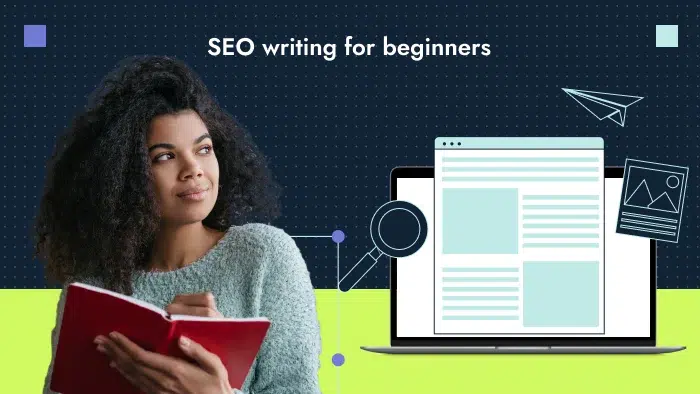How to Structure SEO Content Around Personal Stories for Beginners
Content writing beginners often struggle with making their articles both informative and engaging. One powerful solution? Telling your own story. Personal storytelling in SEO content doesn’t just improve readability it creates trust, boosts engagement, and aligns perfectly with Google’s E-E-A-T principles (Experience, Expertise, Authoritativeness, and Trust). When structured properly, your personal experience can turn a regular article into a compelling piece that ranks and resonates.
But storytelling isn’t about random life events it’s about connecting real experiences with your SEO goals. In this article, you’ll learn how to structure SEO content using personal stories that are authentic, purposeful, and beginner friendly. Whether you’re just starting or trying to build a personal brand, this guide will show you how to write content that feels both human and optimized.
Why Personal Stories Matter in SEO
Builds Emotional Connection with Readers
People relate more to real-life situations. When you share personal experiences, your audience sees you as someone they can trust not just another website.
Aligns with Google’s E-E-A-T Guidelines
Google rewards content that demonstrates real world experience. Sharing your own story adds credibility and authority to your SEO content.
Increases Time on Page
Personal stories keep readers engaged longer, which can reduce bounce rate and improve your SEO metrics naturally.
Choosing the Right Personal Story for SEO
Relevance to Your Topic
Your story should support your main SEO focus. For example, if your keyword is about “SEO for beginners,” share how you first learned SEO.
Be Honest, Not Dramatic
The goal is authenticity. Your experience doesn’t need to be dramatic just real and helpful.
Link Story to a Problem and Solution
Good storytelling for SEO highlights a struggle, a lesson, and a solution. This mirrors how readers search for answers.
Structuring Your Article Around Your Story
Use a Clear Article Framework
Follow this basic SEO structure:
- Intro (include the hook + preview the story)
- Body Sections (split into lessons or steps, each connected to your story)
- Conclusion (wrap up the message + final takeaway)
Place Your Story in the Right Spot
- Open with a snippet of the story as a hook
- Deepen it in the body when explaining your point
- Refer back to it in your conclusion for emotional closure
Transition Smoothly Between Story and Teaching
After sharing a personal moment, immediately explain how it ties into the reader’s problem and what they can learn from it.
Writing Style Tips for Beginners
Keep Sentences Simple and Direct
Avoid jargon or complex words. Write like you talk but stay professional.
Format for SEO and Readability
Use:
- Short paragraphs
- H2/H3 headings
- Bullet points where necessary
This helps users skim and keeps Google bots happy.
Use First Person Voice Thoughtfully
Beginner writers often overuse “I”. Instead of saying,
“I did this…”
Try,
“Here’s what worked for me, and how you can apply it too.”
Integrating SEO with Personal Content
Natural Keyword Placement
Place your focus keyword like “structure SEO content with personal stories” naturally in the intro, one H2, and the conclusion.
Add Internal Structure Using Subheadings
Break down your article using relevant H2 and H3 headings that include secondary keywords or reader questions.
Optimize Meta Elements
- Title Tag: Keep it short and clear
- Meta Description: Summarize value within 150 characters
- URL Slug: Include keyword (see below for your permalink)
Mistakes to Avoid When Using Personal Stories
Turning the Article into a Diary
Remember, the story is a support not the center. Stay focused on the reader’s benefit.
Ignoring SEO Fundamentals
Even a well told story won’t rank if your article lacks proper formatting, metadata, or keyword research.
Telling Unrelated or Overused Stories
Avoid cliché or generic stories like “my blogging journey” unless you can add a fresh, specific lesson.
Example Outline Using a Personal Story
Let’s say you’re writing about how you struggled with keyword research.
- Intro: Mention your confusion with SEO as a beginner
- H2: My First SEO Fail (Share your story)
- H2: What I Learned About Keyword Intent
- H2: How I Changed My Strategy
- H2: The Results After Implementing Changes
- Conclusion: Tie back to the beginning and offer actionable advice
Final Tips for SEO Success with Stories
Focus on One Key Message
Don’t overcomplicate it. One strong story, one core takeaway, and solid formatting go a long way.
Mix Data with Emotion
If you have stats to show how your strategy worked, include them after your story to increase credibility.
End with a CTA
Ask the reader to reflect, comment, or try adding a story to their next post.
Read also: Mastering SEO Content Creation with Smart AI Tools
Conclusion
As a beginner, combining personal storytelling with SEO content is one of the most effective and authentic ways to connect with your audience and Google. You’re not just creating content for rankings; you’re offering something meaningful by sharing what you’ve actually experienced.
A well structured story makes your SEO article easier to read, more relatable, and more memorable. It fulfills E-E-A-T requirements by showcasing your real world experience and human insight. Just remember: keep your story relevant, your structure clean, and your SEO practices in place.
Don’t worry about being perfect worry about being honest and helpful. That’s what makes your content stand out. Start with a simple experience that taught you something, explain how it relates to your topic, and invite your readers to act. That’s storytelling with purpose. That’s SEO with heart.
FAQs
1. Why should beginners use personal stories in SEO content?
Personal stories help create a human connection and demonstrate real experience, which builds trust and aligns with Google’s E-E-A-T.
2. How do I pick the right story for my SEO article?
Choose a personal experience that’s relevant to your topic and provides a lesson your audience can learn from.
3. Do personal stories improve search rankings?
Yes. They increase engagement, dwell time, and trust—key metrics Google considers when ranking content.
4. How long should personal stories be in a blog post?
Keep them concise usually 3 to 6 sentences are enough. They should support your point, not distract from it.
5. Can I use storytelling even if I’m new to SEO?
Absolutely! In fact, beginners often have the most relatable experiences to share. Use your learning journey as valuable content.






